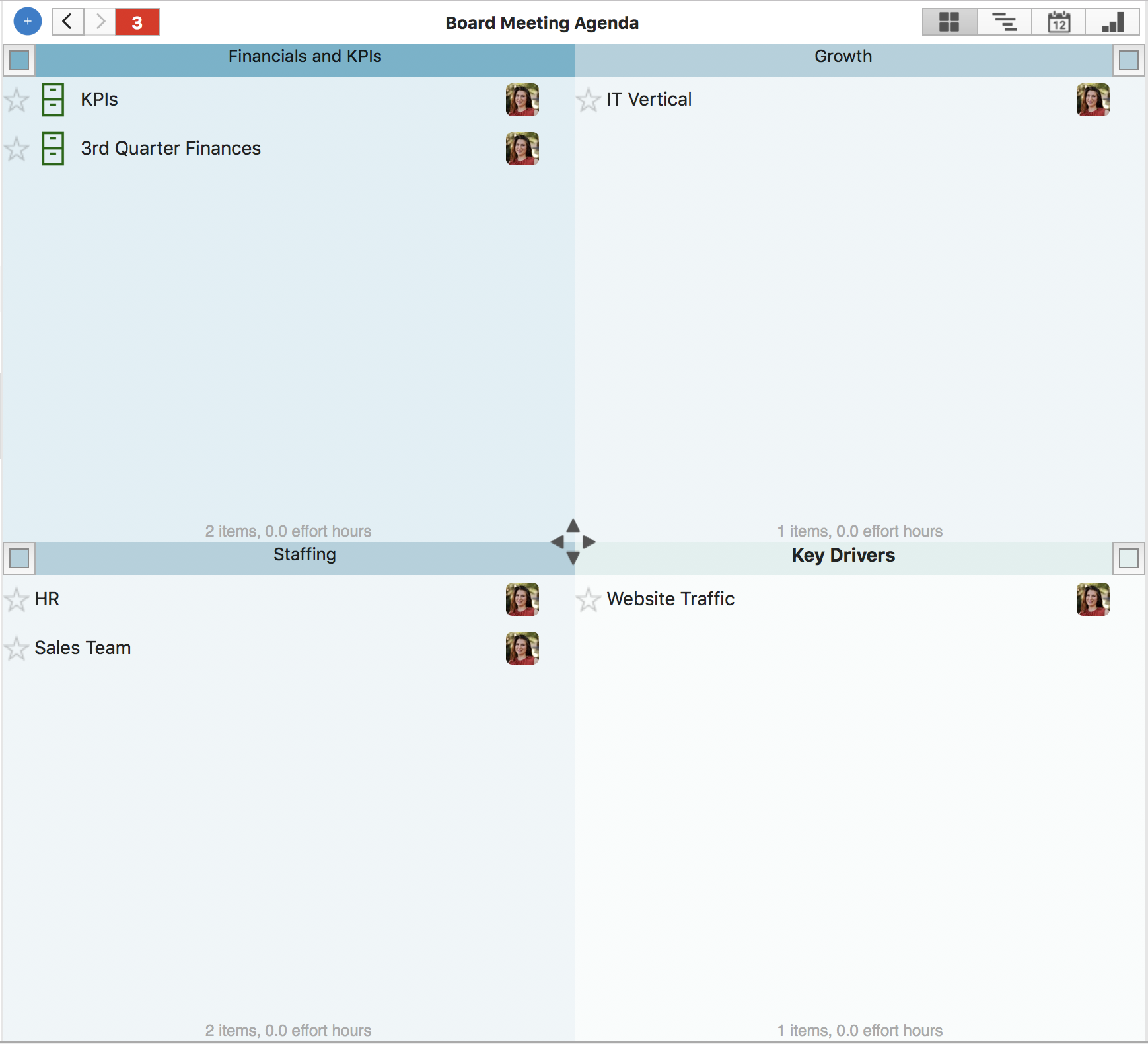
Critical Activity for CEO
The importance of a board meeting cannot be stressed too much. In terms of cost, board meetings take up the time of some of the top resources in the company. In addition, they are opportunities for the CEO and other executives to demonstrate their abilities. Not taking advantage of this opportunity or wasting everyone’s time because of ineffective meeting leadership or lack of organization will prove to be an expensive mistake. We’ve rounded up some of wisdom around board meetings from top entrepreneurs and suggestions for a board meeting agenda:
1. Help the board Help You
A board meeting is not simply for you to be judged by people with power. Jeff Bonforte who sold his company, Xobni, to Yahoo in 2008, learned this over time. Do not be afraid to assign tasks to board members. As he shares in “The Secret to Making Board Meetings Suck Less,” the board works for you as well:
Every single entrepreneur forgets that the board works for them. They’re in meetings getting their asses kicked and walking out with even more work to do. They feel like they have to prove their vision instead of proving that everyone in the room should be working together to solve the problem. As the CEO, you feel like it’s your job to carry the ball across the line, but it’s also the board’s job too.
2. Balance the Success Narrative with Potential Risks
Matthew Prince and Michelle Zatlyn, founders of Cloudflare, shared their experiences with Inc. magazine. A key piece of advice they found helpful came from Steve Goldberg, partner at Venrock. Goldberg reminded the two that they should be careful how they manage success and expectations:
There are two ways to crash a plane. One is to just fly into the ground. The other is to fly at such a steep angle that you stall…and then you crash into the ground. Your job as CEO is to reassure the people on your board that you are not going to crash the plane. Always tell the truth, always say what’s going on, but when there is really good news, talk about all the stuff that can go wrong–that way, your plane is never flying more than 10 degrees above the horizon.
3. Break the Meeting’s Frame
A recent Harvard Business Review article explores how Netflix disrupted more than just the at-home movie economy. Rather than shuffling the board in and out of conventional meetings, Reed Hastings also has directors attend other regular meetings with senior management in a observational capacity. According to one of the directors, the method is a welcome one:
You see a different level of dynamic of the executive team. You really see how different individuals contribute, you see their expertise, you see the voice that they have around the table, and you see the dynamic with the CEO. You see how the topics that have been discussed, resolved, and reported on in a board meeting actually got processed.
Netflix also decommissioned the board book. Instead, they have a roughly thirty page memo, an online narrative with links to supporting information and access to all company data. Directors can also ask questions of the author via the memo. This cohesive discussion and analysis is given to board members several days in advance and distributed to the top ninety executives as well. With the context from the board memo, and the on site experience that the directors have, board meetings now take a half day or less.
4. Prepare for the Soil for Growth
As author and CEO of a strategic planning and leadership development firm, Stuart Levine has his fair share of best practices not only for board meetings but business in general. As he wrote in an article for Forbes.com, “one of the great fundamentals in life is preparation.” An avid gardener, Levine has seen the benefits of preparing the soil to encourage growth. This is true in business as well:
The CEO also has a huge responsibility to board members and shareholders to effectively prepare before a board meeting. Effective CEOs who want to maintain open and trusting relationships with their board, generally set a rule of sending materials five days in advance of the meeting. This provides for appropriate time to digest the material and have conversations prior to the meeting.
In order to truly get the most from each board meeting, he also makes sure to schedule at least half hour discussions beforehand with each member of the board.
5. Stick to a Template
More than one successful entrepreneur can attest that sticking to a consistent meetings structure is key. When Bonforte realized that he needed advice on his board meetings he asked several entrepreneurs including Mike Maples, Partner at Floodgate. According to Maples, there are only four questions to consider:
Has the market changes since the last meeting? Has it affected the company negatively or positively
Has the team changed? Positively or negatively?
Has the company’s position in the market changed?
Did the company accomplish what they said the would?
Prince and Zatlyn also have a consistent meetings structure as they feel that it helps the board stay engaged and cuts down on time spent preparing. They follow this format:
Financial data and/or metrics tracked
Growth
Staffing Changes
Key Drivers
6. Go Digital with Your Board Meeting Agenda
Many companies like Netflix have moved board meeting preparation and documentation over to digital tools. In Priority Matrix, you can create and save templates for each process. For example, you can use this template to think through the four overarching questions that Maples mentioned:

You can import this template here.
Then, you can build your agenda with supporting documents in this type of project:
Import the agenda template here.
Conclusion
While practices and tools are changing, board meetings will never stop being a critical key to success as a CEO. Taking note of other entrepreneurs’ best practices and digital tools will help you set yourself up for success in front of the board.
